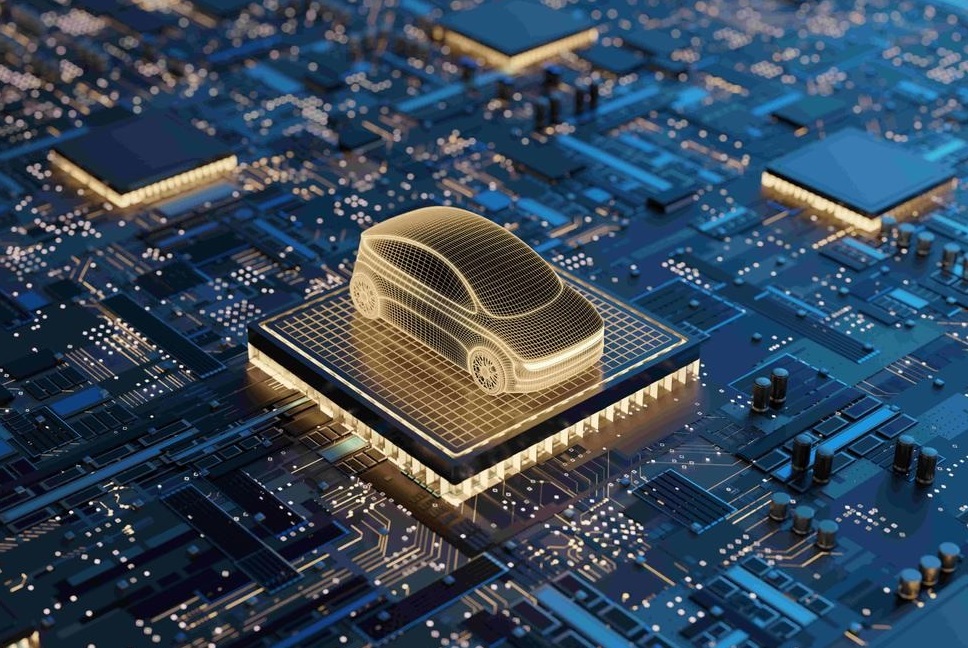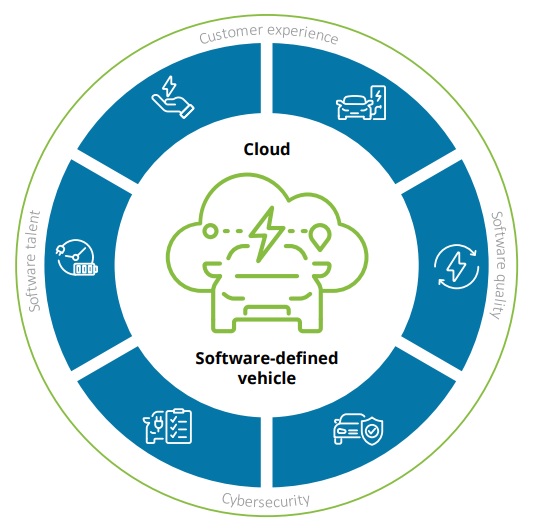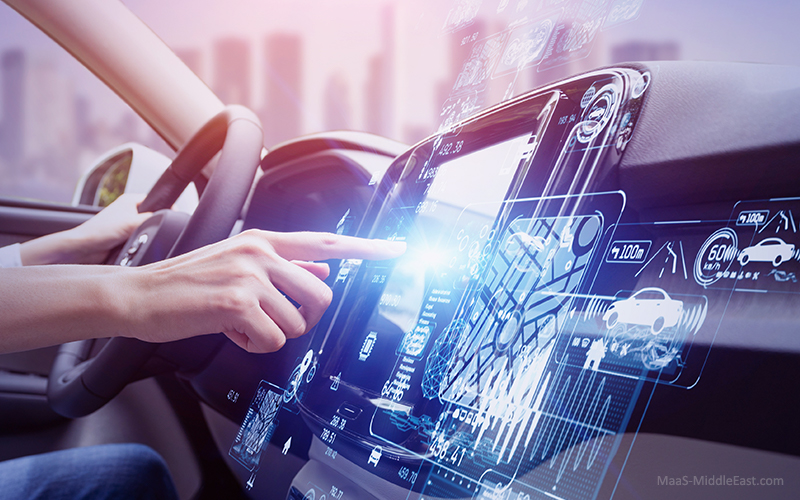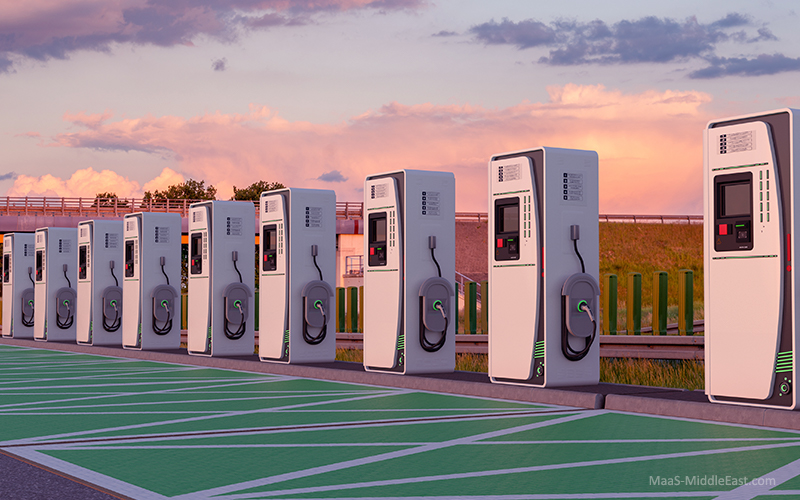Defining the concept of software-defined vehicles
A Software-defined vehicle (SDV) represents a paradigm shift in the automotive industry, transforming the traditional concept of a vehicle into a sophisticated, intelligent, and adaptable machine. Unlike traditional vehicles, where the hardware components dictate the functionalities, SDVs place significant emphasis on software capabilities, allowing for continuous improvements and customizations throughout the vehicle’s lifecycle.
SDVs excel in personalization, integrating the vehicle’s coordinates with the driver’s preferences to offer location-dependent services. Furthermore, these vehicles boast automatic adjustment capabilities, recognizing specific drivers and automatically configuring settings such as seats, mirrors, lighting, temperature, and entertainment preferences. SDVs operate through advanced software and central control units, managing various vehicle systems. Software plays a key role in enabling customizable features and providing users with a personalized and enhanced driving experience.
Another notable aspect of SDVs is their integration of augmented reality, allowing for the display of high-resolution images in adverse weather conditions. Beyond these user-facing features, SDVs operate with software as their “brain,” containing critical information such as design parameters, failure-mode event analyses, quality fix procedures, and manufacturing processes. This extensive dataset empowers SDVs to identify and correct issues automatically as they occur, signifying a remarkable advancement in the automotive industry.
Future of software-defined vehicles
The fundamental difference between hardware and software lies in their maintenance needs. While hardware requires minimal attention, software needs ongoing updates and fixes. In the context of Software-Defined vehicles (SDVs), upgraded vehicle architectures, particularly in electrical and electronic systems, serve as the basis for feature upgradability and reduced hardware components.

The future success of SDVs in the automotive industry largely depends on car manufacturers diversifying their SDV product offerings and adopting a software-driven mindset in product development.
As software takes the lead in determining a vehicle’s value and drives innovative business approaches, there will be a growing demand for efficient and adaptable automotive product development workflows. Significant growth is estimated in the automotive software sector, growing from $34 billion in 2020 to surpassing $80 billion by 2030, with an impressive 9% annual growth rate. Despite initial costly development investments, a shift towards prioritizing software over hardware could potentially lower research, development, and production costs in the long run, leading to a simplified supply chain for car producers.
SDV solution space
In the context of Software-Defined vehicles (SDVs), navigating transformation involves dividing efforts into six major categories.
- Autonomous Driving: Advanced Driver-Assistance Systems (ADAS) enhance vehicle safety and drive towards full autonomy by 2025, with alliances aiding development speed and cost-sharing.
- Powertrain and Vehicle Motion: Strategies for electric drivetrains, cloud-based communication, and AI-based battery health models are essential for competitiveness. Predictive battery health recommendations counter capacity loss in EV batteries.
- User-Centric Experience: Shifting control to consumers demands infotainment and interior solutions, with AI-driven features and alliances offering diverse platforms and broad user bases for scale.
- Architecture Core Blueprint: Implementing new physical and logical architecture ensures value in the software-defined era. Software compatibility across departments and ecosystem stakeholder selection are vital for profitable scaling.
- Software-Based R&D and Operations: A modern approach to both onboard and off-board software development, along with strong alliances, is necessary. Efficient structures, powerful software platforms, and continuous operating models are crucial in the post-hardware era.
- Data-Driven and Connected Services: Over-the-air updates replace traditional workshops for vehicle upgrades. Monetization of connected vehicle data and efficient data management for advanced driver-assistance systems (ADAS) and Autonomous Vehicle (AV) features offer competitive advantages in the evolving mobility landscape.
SDV Ecosystem
The Software-Defined Vehicle (SDV) ecosystem at the moment is a complex network centered around software-driven automotive technology and vehicles. It comprises essential components like Electronic Control Units (ECUs), advanced sensors, and actuators, all interconnected and communicating through standardized protocols.

SDVs operate on specialized operating systems, supported by middleware for seamless software integration. Data management is critical, with big data analytics and machine learning refining algorithms for functions like autonomous driving and predictive maintenance. The user experience is enhanced through advanced infotainment systems, personalization features, and over-the-air updates for continuous enhancements. Safety protocols and regulatory compliance are crucial to ensuring legal operation and user safety.
Right now, a big problem for software-defined vehicles is that car producers often build and connect software too closely to specific hardware. To solve this, manufacturers need to use more flexible ways to build things and design applications that can work on different hardware in one seamless ecosystem. The implementation of more virtualization can help keep software systems and hardware separate. This change not only makes the vehicle perform better but also lets manufacturers focus on improving hardware without worrying about compatibility. Partnerships and collaborations among automotive companies, tech firms, and suppliers are most important for the growth of the SDV ecosystem and reshaping the automotive landscape.
Difference between Software-Defined Vehicles and Connected Vehicle
Software-Defined Vehicles (SDVs) and Connected Vehicles represent significant advancements in the automotive industry, but they differ in their core focus and functionalities.
SDVs put software at the forefront, relying on advanced software and computing technology to control various vehicle systems. They enable continuous software updates, allowing for customization, personalization, and the addition of new features throughout the vehicle’s lifespan. SDVs are often associated with autonomous driving technology, using artificial intelligence and machine learning algorithms to enhance driving capabilities, such as autonomous navigation and obstacle detection.
On the other hand, Connected Vehicles primarily emphasize communication capabilities. These vehicles are equipped with sensors and internet connectivity, enabling data exchange between the vehicle and external networks or services. Connected Vehicles can communicate with other vehicles (V2V), infrastructure (V2I), and external platforms, facilitating features like traffic updates, remote diagnostics, and real-time navigation. Moreover, they are designed to access the internet, providing passengers with services like infotainment, streaming, and online applications during their travels. Additionally, Connected Vehicles generate data related to driving patterns, location, and vehicle health, which can be shared with manufacturers or service providers for analysis and improvements.
In essence, while SDVs enhance vehicle capabilities and customization through software, Connected Vehicles emphasize communication features and connectivity with external networks and services.





